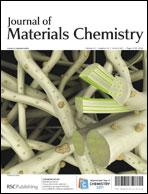Ordered mesoporous carbons with various morphologies, including rod-like, gyroid-shaped, plate-like and flower-type, were synthesized by changing the hydrochloric acid concentration in the formation of silica/triblock copolymer P123/glycerol composites and further carbonization. Triblock copolymer P123 and glycerol were used as both the structure-directing agents and the carbon precursors. The morphologies, structures and pore characteristics of the carbon materials were investigated by scanning electron microscopy, transmission electron microscopy, X-ray diffraction, and nitrogen sorption techniques. The electrochemical performances of the carbons as electrodes for supercapacitors were measured. The relationships between the capacitive behavior, the morphology and the pore characteristics were elucidated briefly. It was found that the sample possessing the highest surface area of 1312 m2 g−1 exhibits the highest specific capacity of 164 F g−1 among the five samples at a current density of 100 mA g−1, and decreases from 164 to 142 F g−1 with an increase in current density from 100 to 2000 mA g−1. The capacitance retention ratio (relative to the capacitance at a current density of 100 mA g−1) of the sample with short rods at a current density of 2000 mA g−1 (94.4%) is much higher than that of the sample with long rods (86.6%), which could be partly ascribed to its shorter pore channels.

You have access to this article
 Please wait while we load your content...
Something went wrong. Try again?
Please wait while we load your content...
Something went wrong. Try again?


 Please wait while we load your content...
Please wait while we load your content...